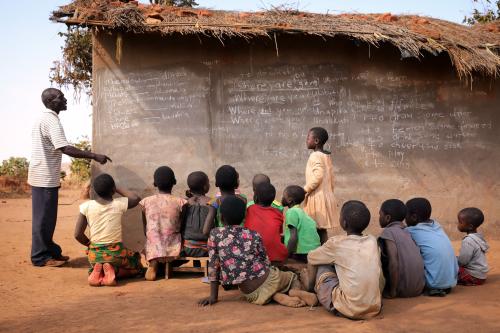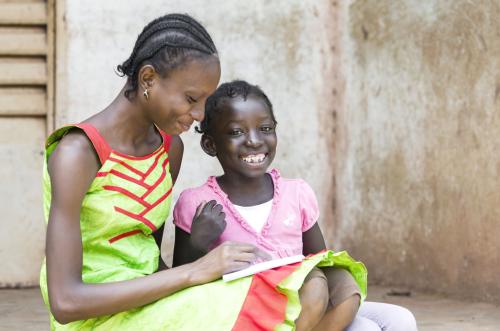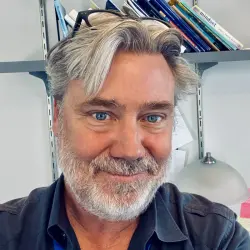On the 4th annual International Day of Education, I find myself awash in some of the thorny paradoxes that mark educational development at the global level.
Until halfway through the 20th century, education was mostly a local affair. Although some reformers traveled abroad to find innovative instructional practices (including Horace Mann, Johann Heinrich Pestalozzi, and the Qing dynasty), in most cases countries managed their own education programs and—within countries—schooling was often decentralized. It wasn’t until after World War II, when several western governments erected partnerships to ensure peace and economic stability, that multilateral institutions emerged and began articulating shared human values and administering them through educational efforts. Since then, a global architecture has ascended: one that supports countries to adopt education practices that achieve literacy, career preparedness, democratic goals such as gender equity and human rights, and—more recently—critical and creative thinking, digital competence, and environmental stewardship.
This is laudable, yet, like so many things where the traditional clashes with the modern, where local overlaps with global, and where power is unequally apportioned, international education efforts are shaped by inherent tensions.
1. Retaining the local as we embrace the global
Contemporary education donors and policymakers like to borrow from each other and learn from successes and mistakes in other countries. There’s value in not reinventing the wheel (even though, conversely, some organizations prefer to “do it themselves”). Currently, therefore, a relatively small menu of educational innovations circulates the globe (e.g., education technology, charter schools, online teacher development, afterschool volunteer mentoring, and student-centered instruction).
Yet, this homogenization of innovations narrows the scope of what is thinkable and available in education. Does it discourage new or alternative ideas? How does a country capitalize on its unique strengths and characteristics if its education program is dominated by other countries’ policy agendas? And which countries’ reforms dominate the reform menu—the ones with foreign aid to deliver, or those scoring highest on assessment tables?
Identifying what’s right for a particular location, looking for new solutions, and at the same time building on the existing knowledge base can appear to be incompatible goals.
2. Harnessing the good of modernization while filtering out the bad
To many, modernization is a universal virtue. It’s hard for most of us to argue against girls’ access to quality education, differentiated instruction, or equal school funding for low-income communities. Public heath, strong economies, representative democracy, technological and medical advancement, and equal rights matter.
Yet, some of the aspects that come along for the ride—like remora fish attached to their hosts—give me pause. Is technology really the solution to many of the world’s educational problems or does it simply replace one slate of problems with another? Is GDP really the exalted metric, or should education prioritize happiness or environmental responsibility instead? Is it possible to pry modernization away from vexing neoliberal traits like new managerialism in education or an overreliance on standardized testing?
3. Improving institutions when everything is connected
The popularity of systemic reform in global education is undergirded by a healthy view of the interconnectedness of all things. As a result, we engage in the complexity of whole systems. We promote holistic implementation frameworks, speak of “transformation” rather than “transfer,” and strive for collaborative buy-in from broad arrays of stakeholders and sectors.
For me, International Day of Education is an exhortation to keep pushing. Let us be brave and find strength in our connections to each other.
Yet, harnessing complexity is elusive. For example, improving education cannot be separated from poverty. But alleviating poverty requires addressing hunger, which is connected to food scarcity which is likely linked to climate change.
One inevitably finds that the strands that can be controlled (like funding formulas or math curricula) are hitched to strands that cannot (such as budget variances, competing social priorities, or a global pandemic). As a result, we can get dejected by the enormity of it all.
4. Transforming schools while they’re still in use
Speaking of COVID-19, the pandemic revealed that education around the world must be structurally transformed, not just cosmetically improved. Nineteenth-century practices like 40 children listening to a single adult standing at the front, recitation and fact-based assessment, or teaching as a low-paid semi-profession all need significantly more than a makeover. If we didn’t know that before, we sure do now.
Yet, how do you rebuild a plane in the air? We cannot pause education for a generation while we overhaul institutions and retool learning and teaching as contemporary creative human practices. This is why tinkering is the norm and surface changes beat out deep renewal.
Furthermore, governance craves political wins—a fact that privileges small projects, cheap fixes, and short-term efforts. But transforming a country’s educational ecosystem requires decades of continuity and shared purpose; egoless leadership at all levels; and financial, political, and social commitment.
What does it all mean?
As I contemplate these rooted tensions, I realize that persevering in education is not about solving the paradoxes but about striving to succeed within them: finding the middle path, making productive use of the benefits of each side while avoiding the pitfalls of each extreme.
Acknowledging the plethora of forces pushing against fundamentally improved education systems around the world is key.
So is not giving up.
And that’s where I find hope. We’ve learned a lot about improving education over recent decades and a ton over the last 24 months. There are many success stories to be found.
I believe that holism is the best conceptual approach. Systemic reform is the wisest policy path. And opening deep learning to everyone, tying schools to communities, and equitably prioritizing 21st century knowledge and dispositions are the right educational goals. There are millions of educators, researchers, donors, and government personnel who care deeply and can unite their efforts to thoughtfully combine these dimensions for transformation.
For me, International Day of Education is an exhortation to keep pushing. Let us be brave and find strength in our connections to each other. Let’s share what’s working but balance expertise with curiosity, confidence with humility. I hope that we will share our successes next year on this day.







Commentary
4 paradoxes of global education on International Day of Education
January 21, 2022